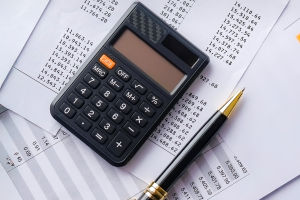A few years ago, a friend of mine paid for her flight to visit family entirely with reward points. I remember asking, "Wait, you didn't pay anything?" She smiled and said, "Just taxes." That stuck with me—not because of the free flight, but because she made her everyday spending work for her.
Cashback and reward programs aren't just marketing tricks. If you use them right, they can stretch your money further without needing any major life changes. But the key word here is "smart." Used carelessly, they can just lead to more spending. Used wisely? They're free money.
Here's how to actually make them work.
1. Pick Just One or Two Programs and Learn Them Well
You don't need to join every program that flashes "Earn Rewards!" at you. In fact, doing that can be overwhelming and counterproductive. Instead, choose one or two that actually align with your spending habits.
For example, if you mostly shop at a specific grocery store, their loyalty program could save you serious cash. If you use a credit card for daily expenses, pick one with cashback or points that don't expire quickly and are easy to redeem.
Keep it simple. Master one, then layer on more only if it makes sense.
2. Use a Cashback Credit Card—But Only If You Pay in Full
This tip comes with a big asterisk: never carry a balance just to earn points. Cashback cards are great only if you pay off your full balance each month.
Otherwise, you'll end up paying more in interest than you earn in rewards.
If you're disciplined, though, the math works in your favor. A card offering 1.5% cashback on all purchases can give you $150 a year for every $10,000 you spend—no hoops to jump through.
3. Stack Rewards Whenever Possible
One trick that savvy shoppers use is reward stacking, which involves combining multiple rewards programs to maximize savings on the same purchase. According to consumer savings expert Andrea Woroch, stacking rewards can significantly enhance your overall discount, helping you get the most value for your money.
For example:
• Use a store loyalty card for in-store discounts
• Shop through a cashback website like Rakuten
• Pay with your cashback credit card
All three can apply to the same transaction. You get the sale price, earn cashback from the site, and rack up points on your card. It's like saving three times.
4. Redeem Strategically—Not Impulsively
It's tempting to cash out rewards the moment you have enough. But sometimes waiting pays off more.
Many travel reward programs, for instance, give better value when you redeem for flights rather than gift cards. And some cashback cards offer bonus redemption options—like 10% more value if you apply the cashback to a travel booking through their platform.
Before cashing in, check whether there's a smarter way to use those rewards. Don't leave value on the table.
5. Treat Rewards Like a Bonus, Not a Budget
This part's crucial: don't treat rewards like income.
People often fall into the trap of thinking, "Well, I'll earn points, so I might as well spend a little more." That's how $10 in cashback turns into $200 in unnecessary purchases.
Instead, view your rewards as a little surprise bonus—a gift from your past self. Use them to offset real needs (like holiday gifts or groceries) or save them for a bigger treat later.
6. Track What You're Earning (and Using)
If you're serious about rewards, keep a simple tracker. You don't need fancy software—just a note in your phone or spreadsheet with:
• Which programs you're in
• Current point/cashback balance
• Expiry dates (if any)
• What you've redeemed
This prevents surprises, like points quietly expiring or forgetting you had a $25 cashback credit waiting to be claimed.
Smart rewards use isn't about gaming the system—it's about making everyday choices work harder for you. Whether it's a free flight, a little cash back on groceries, or a $10 gift card you weren't expecting, it all adds up.
And the best part? You're not doing anything extra—just being intentional with what you were already spending.
So, what would you do with an extra $100 in cashback this year? That choice could be closer than you think.


